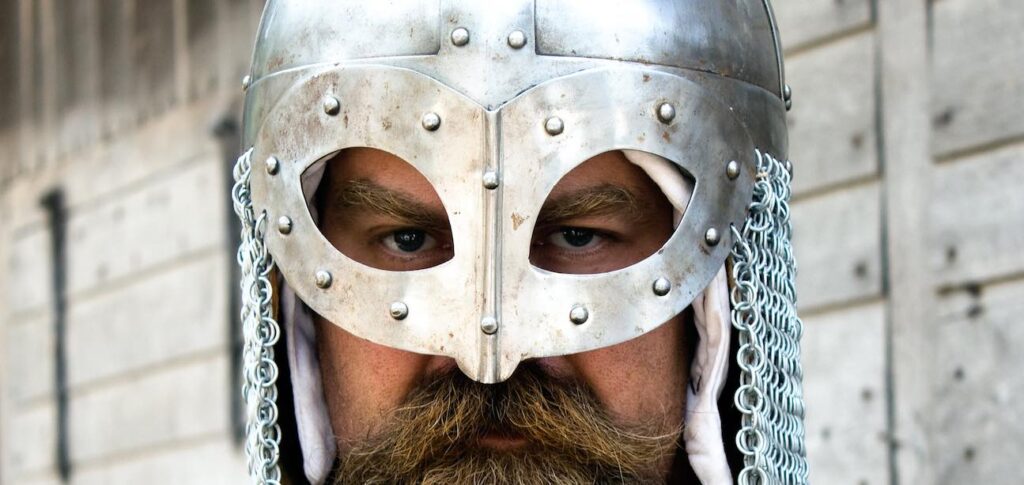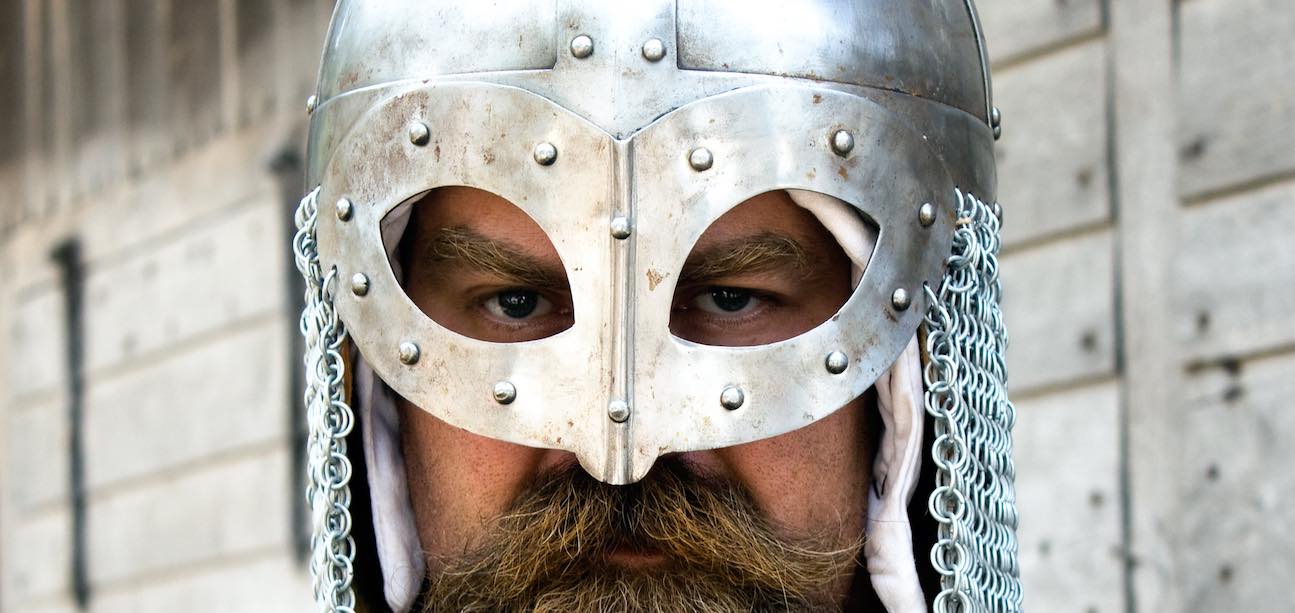Invaders, pirates, warriors—the history books taught us Vikings were brutal predators who travelled by sea from Scandinavia to pillage and raid their way across Europe and beyond.

Now cutting-edge DNA sequencing of more than 400 Viking skeletons from archaeological sites scattered across Europe and Greenland will rewrite the history books as it has shown:
Skeletons from famous Viking burial sites in Scotland were actually local people who could have taken on Viking identities and were buried as Vikings; many Vikings actually had brown hair not blonde hair; the genetic legacy in the UK has left the population with up to six per cent Viking DNA, and Viking identity was not limited to people with Scandinavian genetic ancestry—the study shows the genetic history of Scandinavia was influenced by foreign genes from Asia and Southern Europe before the Viking Age.
The six-year research project debunks the modern image of Vikings.
Co-first author Dr Daniel Lawson, from the University of Bristol, said, “The Vikings have an image of being fierce raiders, and they certainly were. What was more surprising is how well they assimilated other peoples.”
“Scottish and Irish people have integrated into Viking society well enough for individuals with no Scandinavian ancestry to receive a full Viking burial, in Norway and Britain. We studied two Orkney skeletons from Viking graves with Viking swords who share ancestry with present-day Irish and Scottish people, who could be the earliest Pictish genomes ever studied.”
Work from the School of Mathematics at the University of Bristol specialized in separating out very similar ancestries.
RELATED: Genetic Code from 5,700 Year-old ‘Chewing Gum’ Reveals Extraordinary Details of Young Danish Woman
“People in Scandinavia during the Viking age were relatively similar, but we developed advanced methods to separate their ancestries. This showed that Norwegians predominantly went to Ireland and Iceland, whilst Danes came to England,” said Dr Lawson, Senior Lecturer in Data Science.
“But Viking were often diverse, with ancestry from all over Scandinavia and the British Isles found in the same raiding party. The Vikings coming to Britain and Ireland were part of a wider migration spanning several centuries.”
A history lesson
The word Viking comes from the Scandinavian term ‘vikingr’ meaning ‘pirate’.
The Viking Age generally refers to the period from A.D. 800, a few years after the earliest recorded raid, until the 1050s, a few years before the Norman Conquest of England in 1066.
The Vikings changed the political and genetic course of Europe and beyond: Cnut the Great became the King of England, Leif Eriksson is believed to have been the first European to reach North America, 500 years before Christopher Columbus, and Olaf Tryggvason is credited with taking Christianity to Norway. Many expeditions involved raiding monasteries and cities along the coastal settlements of Europe but the goal of trading goods like fur, tusks, and seal fat were often the more pragmatic aim.
LOOK: Lamb, Coriander, and Leeks: Decoded Babylonian Recipes Reveal Ancient Culinary Traditions
Lead author Professor Eske Willerslev, a Fellow of St John’s College at the University of Cambridge and director of the University of Copenhagen’s Lundbeck Foundation GeoGenetics Centre, said: “We didn’t know genetically what they actually looked like until now. We found genetic differences between different Viking populations within Scandinavia which shows Viking groups in the region were far more isolated than previously believed. Our research even debunks the modern image of Vikings with blonde hair as many had brown hair and were influenced by genetic influx from the outside of Scandinavia.”
DNA testing
The team of international academics sequenced the whole genomes of 442 mostly Viking Age men, women, children, and babies from their teeth and petrous bones found in Viking cemeteries. They analyzed the DNA from the remains from a boat burial in Estonia and discovered four Viking brothers died the same day. The scientists have also revealed male skeletons from a Viking burial site in Orkney, Scotland, were not actually genetically Vikings despite being buried with swords and other Viking memorabilia.
There wasn’t a word for Scandinavia during the Viking Age—that came later. But the research study shows that the Vikings from what is now Norway traveled to Ireland, Scotland, Iceland, and Greenland. The Vikings from what is now Denmark traveled to England. And Vikings from what is now Sweden went to the Baltic countries on their all-male ‘raiding parties’.
MORE: While Excavating 1000-Year-old Viking Ship, Norwegians Find Remnants of Elite Society
DNA from the Viking remains were shotgun sequenced from sites in Greenland, Ukraine, The United Kingdom, Scandinavia, Poland, and Russia.
The team’s analysis also found genetically Pictish people ‘became’ Vikings without genetically mixing with Scandinavians. The Picts were Celtic-speaking people who lived in what is today eastern and northern Scotland during the Late British Iron Age and Early Medieval periods.
The Viking Age altered the political, cultural, and demographic map of Europe in ways that are still evident today in place names, surnames, and modern genetics.
Professor Søren Sindbæk, an archaeologist from Moesgaard Museum in Denmark who collaborated on the ground-breaking paper, explained: “Scandinavian diasporas established trade and settlement stretching from the American continent to the Asian steppe. They exported ideas, technologies, language, beliefs, and practices and developed new socio-political structures. Importantly our results show that ‘Viking’ identity was not limited to people with Scandinavian genetic ancestry.”
Assistant Professor Fernando Racimo, also a lead author based at the GeoGenetics Centre in the University of Copenhagen, stressed how valuable the dataset is for the study of the complex traits and natural selection in the past.
SEE: Watch a Billion Years of Shifting Tectonic Plates Forming Our Continents in 40 Seconds
He explained, “This is the first time we can take a detailed look at the evolution of variants under natural selection in the last 2,000 years of European history. The Viking genomes allow us to disentangle how selection unfolded before, during and after the Viking movements across Europe, affecting genes associated with important traits like immunity, pigmentation and metabolism. We can also begin to infer the physical appearance of ancient Vikings and compare them to Scandinavians today.”
Source: University of Bristol
The genetic legacy of the Viking Age lives on today with six per cent of people of the UK population predicted to have Viking DNA in their genes compared to 10 per cent in Sweden.
Professor Willerslev concluded of the research, published in Nature, “The results change the perception of who a Viking actually was. The history books will need to be updated.”
LET Fascinating Stories Like This One Evolve in Those News Feeds—Click Share…




















